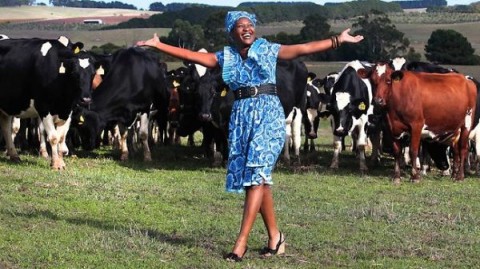According to the World Bank, 60 per cent of the population lives below the poverty line and 42 per cent are considered to be in extreme poverty.
Moreover, the absolute number of poor people has increased from about six million in 1991 to 7.9 million in 2010, primarily due to population growth.
Almost 90 per cent of Zambians who live below the extreme poverty line are concentrated in rural areas, and the poverty gap ratio (a measure of how far average incomes fall below the poverty line) is far higher for the rural population than their urban counterparts (20 per cent and 3.7 per cent, respectively).
As such, it is inevitable that the government puts in place measures to cushion the effects of the country’s high poverty levels on the economy.
One such move is the recently launched communication strategy for the social cash transfer scheme under the Ministry of Community Development, Mother and Child Health (MCDMCH).
This was of course arrived at after the realisation that no country can achieve meaningful and sustained economic growth without social protection playing an active role.
Speaking at the official launch of this scheme in Lusaka, Vice-President Guy Scott reiterated that the Patriotic Front (PF) government was elected to advance the pro-poor agenda because we are concerned about the high levels of poverty whereby 42 per cent of the poorest people are extremely poor.
“We have large numbers of people who are trapped in long term poverty which tends to be transmitted from generation to generation,” he said.
“My government is committed to social protection as it realises that it is a means of reaching out to the poor and the vulnerable people,” Dr Scott added.
He explained that social protection contributes directly to fighting poverty as transfers are directly given to people who can immediately support themselves as opposed to waiting for the trickle down effect.
This helps to raise their incomes and improve education and health levels which are key ingredients for citizens to become economically productive.
He explained that income inequalities if not seriously addressed can be fertile ground for disenchanted citizens which can lead to deeper social and economic problems.
As such, one of the key vehicles of delivering social protection is through social cash transfers.
The history of the social cash transfer in Zambia can be traced back to 2003 in Kalomo District.
It began as a response to the increasing vulnerability and poverty due to the effects of HIV and AIDS.
The overall goal of the social cash transfer scheme is to reduce extreme poverty and inter-generational transfers of poverty.
The purpose is to realise improved well-being in households covered by the scheme.
Social cash transfers aim to provide basic support to those cohorts of the population who for reasons beyond their control are not able to provide for themselves.
The bulk of households in need of basic support are headed by the elderly, widowed and the disabled.
The PF government has a serious resolve towards the fight against the extreme poverty and vulnerability.
“Extreme poverty can be dehumanising, and in this regard, government is committed towards the provision of funds for the social cash transfer scheme in order to realise its overall objective,” he said.
“Government remains absolutely committed towards increasing the funding towards the scheme in 2014,” the Vice-President stated.
The scheme is currently being implemented in the 19 re-aligned districts, and the total case-load of beneficiaries is 61,000 recipients and the beneficiary households are paid an amount of K60 per month and those households that have members living with disabilities are paid twice this amount.
The transfer amount is indexed every year to take into account the inflationary rate in order to afford the beneficiaries to at least purchase a bag of maize and enable them have an extra meal.
In the case of Zambia, recent impact and evaluation results indicate that extreme poverty is reduced by 5.4 percentage points.
And the scheme has already shown some positive impacts on the livelihoods and welfare of the beneficiaries in the already implementing districts in Zambia.
These households are able to afford more than one meal per day which most of them could not afford previously.
They are also able to send their children to school and provide them with school requisites contrary to perceptions that social cash transfers create dependence, while other beneficiaries of this scheme invest the transfers into small livestock rearing.
This in itself is a clear indication of the effects that the social cash transfer scheme has on the poorest and vulnerable people in Zambia.
Dr Scott, however, expressed concern that despite the government doing so much to ensure its success, it seems that the majority of the populace is not aware about the social cash transfer scheme, and in cases where they may be aware, they do not have accurate information on the matter.
He explained that the just launched communication strategy is therefore aimed at bridging this gap as well as creating awareness for the general public and beneficiaries including decision makers on the importance of social protection interventions.
MCDMCH Minister Joseph Katema described social protection as a vital pillar to the overall development of a nation, as they can never be sustain development when the majority of the populace is wallowing in extreme poverty.
He said the social cash transfer scheme in Zambia directly responds to the second objective of the Social Protection Chapter of the Sixth National Development Plan (SNDP).
“Injected cash into vulnerable households resulted in increased expenditure, mainly on food and ultimately consumption,” he said.
Evidence from the field indicates that besides using some of the money for investments in small livestock, recipients also use the money for contracting of labour for their agricultural fields.
Therefore, the launch of the communication strategy will enable the public understand the scheme and support its implementation.
Dr Katema said it will ensure that MCDMCH provides critical information about the programme to implementers, key policy makers, the general public and beneficiaries.
Meanwhile, MCDMCH Permanent Secretary Elwyn Chomba reiterated her ministry’s commitment to ensure that the newly launched communication strategy is implemented.
She called for the need for continued education for government officials on the importance of prioritising the implementation of this strategy.
The strategy will accord the general public an opportunity to be heard and get engaged as they provide feed-back on how the programme is being implemented.
The transfer amount entitled to each beneficiary per household is K60 which is paid to them on a bi-monthly basis at a sum of K120.
On the other hand, households with members living with disabilities receive K240, and these funds are paid through established pay-points such as the nearest health center or school.
The scheme is cost efficient with its administrative costs remaining below 20 per cent of the total costs.
A national scale-up based on the Kalomo model would cost roughly 134 million for 200,000 households with average administrative costs of about 20 per cent.
The implementing structures involve all levels of the Department of Social Welfare all the way to community levels.
In 2010, 95 per cent of CGP recipients fell below the extreme poverty line, as defined by the Central Statistical Office, compared with 96 per cent of rural households across the country.
It is hoped that the implementation of the communications strategy will enhance the design and implementation of the social cash transfer scheme to address the overall objective of reducing extreme poverty
and ultimately contributing towards the attainment of the Millennium Development Goals (MDG’s).

 JOIN DRIVERN TAXI AS PARTNER DRIVER TODAY!
JOIN DRIVERN TAXI AS PARTNER DRIVER TODAY!











